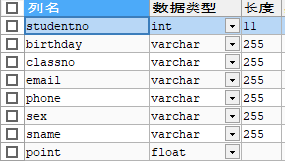Flask URL默认转换器、自定义转换器、to_python、to_url
- 2019 年 11 月 13 日
- 筆記
Flask框架自带的转换器类型
- int转换器
<int:param>:接收整数 - float转换器
<float:param>: 接收浮点数 - string转换器
<string:param>: 接收string类型(默认则是string转换器) - path转换器
<path:param>:和默认的相似,但也接收斜线
设置int类型的路径参数
# 转换器 <int:goods_id> @app.route('/goods_info/<int:goods_id>') def goods_info(goods_id): return "goods_id is %d" % goods_id
测试访问 http://127.0.0.1:5000/goods_info/123

设置float转换器的路径参数
# 设置float转换器 @app.route('/goods_info/<float:goods_id>') def goods_info(goods_id): return "goods_id is %s" % goods_id

可以发现参数为float参数是能够正常访问处理的。

当传递参数为 123 整数的时候,则报错Not Found。

当传递参数为 hello 字符串的时候,则报错Not Found。
设置string类型的路径参数
# 设置转换器 <string:goods_id> @app.route('/goods_info/<string:goods_id>') def goods_info(goods_id): return "goods_id is %s" % goods_id
测试访问 http://127.0.0.1:5000/goods_info/你好

可以看到中文的字符串参数也是可以直接获取的。
- 其中如果转换器不写类型,默认就是string类型的,示例如下:
# 设置转换器 默认是string @app.route('/goods_info/<goods_id>') def goods_info(goods_id): return "goods_id is %s" % goods_id
设置path转换器的路径参数
# 设置path转换器 @app.route('/goods_info/<path:goods_id>') def goods_info(goods_id): return "goods_id is %s" % goods_id
测试访问:http://127.0.0.1:5000/goods_info/hello//world/123

可以看到 path转换器 可以接收斜杠 / 将后面所有的字符串都作为参数传递。
上面的这几种Flask自带的转换器虽然可以设置很多参数了,但是还是无法匹配一些特殊需求的路径参数。
例如:在发送短信的URL中,路径参数设置为手机号码,上面的自带类型就无法精确匹配手机号码了。
这时候就需要自定义路由转换器出场了。
自定义路由转换器
1.自定义路由转换器的基础类:
from werkzeug.routing import BaseConverter
2.创建自定义转换器,以及将转换器加入Flask应用中:
# 创建自定义转换器 # 1. 定义自己的转换器 class RegexConverter(BaseConverter): """""" def __init__(self, url_map, regex): """ :param url_map: 固定传递的参数,用于调用父类的初始化方法 :param regex: 从url使用()传递过来的正则参数 """ # 调用父类的初始化方法 super(RegexConverter, self).__init__(url_map) # 将正则表达式的参数保存到对象的属性中,flask会去使用这个属性来进行路由的正则匹配 self.regex = regex # 2. 将自定义的转换器添加到flask的应用中 app.url_map.converters["re"] = RegexConverter
3.在视图函数中设置自定义路由转换器re:
# 127.0.0.1:5000/send/18912345678 # <re(r''): param> 使用re自定义转换器,其中()则是需要传递的参数 @app.route("/send/<re(r'1[34578]d{9}'):mobile_num>") def send_sms(mobile_num): return "send sms to %s" % mobile_num
4.测试访问符合正则匹配的电话号码的url
访问 http://127.0.0.1:5000/send/18912345678

5.测试访问不符合正则匹配的url
访问 http://127.0.0.1:5000/send/189123

根据不符合正则匹配的URL参数,则报错Not Found。从效果来看,就可以知道通过这个自定义的转换器,我们可以实现这种特殊的参数获取。
创建专属手机号码的转换器
上面的转换器可以传递正则匹配的规则,属于一种万能转换器,下面将其创建一个专属手机号码的转换器。
# 创建Moblie的专属转换器 class MobileConverter(BaseConverter): def __init__(self,url_map): # super(MobileConverter,self).__init__(url_map) # 调用父类方法一 super().__init__(url_map) # 调用父类方法二 self.regex = r'1[34578]d{9}' # 注册MobileConverter转换器 app.url_map.converters["mobile"] = MobileConverter # 设置视图函数 @app.route("/send/<mobile:mobile_num>") def send_sms(mobile_num): return "send sms to %s" % mobile_num
其实这个例子主要是想说明Flask可以创建多个自定义转换器。
另外,在Django中有中间类这个类方法来处理url请求至视图函数之间的业务处理,例如:权限验证,session数据记录等等。
在Flask中可以使用专属转换器的to_python和to_url两个函数来实现类似中间类这样的功能。
下面来看看。
查看BaseConverter类中的源码
class BaseConverter(object): """Base class for all converters.""" regex = "[^/]+" weight = 100 def __init__(self, map): self.map = map def to_python(self, value): return value def to_url(self, value): if isinstance(value, (bytes, bytearray)): return _fast_url_quote(value) return _fast_url_quote(text_type(value).encode(self.map.charset))
首先从源码来分析一下这个继承类中to_python和to_url函数。
- to_python 将url传递的参数,直接将其传递至视图函数之中
- to_url 则是当另一个视图函数使用
url_for()这个方法跳至该转换器的时候,会将url的参数传递到url路径的参数中。
单单这么解释有些抽象,下面来看看示例。
to_python 函数
# 创建Moblie的专属转换器 class MobileConverter(BaseConverter): def __init__(self,url_map): # super(MobileConverter,self).__init__(url_map) super().__init__(url_map) self.regex = r'1[34578]d{9}' def to_python(self, value): """""" print("to_python方法被调用") # value是在路径进行正则表达式匹配的时候提取的参数 return "abc" # 该value会传递到视图函数中 app.url_map.converters["mobile"] = MobileConverter @app.route("/send/<mobile:mobile_num>") def send_sms(mobile_num): return "send sms to %s" % mobile_num
此时测试访问 http://127.0.0.1:5000/send/18912345678
按照原来访问后在浏览器会打印 send sms to 18912345678 的信息,但是由于to_python 设置返回是 "abc",所以浏览器将会打印 send sms to abc,下面来浏览器执行验证看看,如下:

从浏览器就可以判断出to_python方法就是url传递到视图函数中间的业务处理方法,其实就相当于Django的中间类。
如果有权限验证类的需求,可以在to_python中实现。
to_url 函数
# 创建Moblie的专属转换器 class MobileConverter(BaseConverter): def __init__(self,url_map): # super(MobileConverter,self).__init__(url_map) super().__init__(url_map) self.regex = r'1[34578]d{9}' def to_python(self, value): """""" print("to_python方法被调用") # value是在路径进行正则表达式匹配的时候提取的参数 return value # 该value会传递到视图函数中 def to_url(self, value): """使用url_for的方法的时候被调用""" print("to_url方法被调用") return "15811111111" # 该value会修改url路径中的参数为 15811111111 app.url_map.converters["mobile"] = MobileConverter @app.route("/send/<mobile:mobile_num>") def send_sms(mobile_num): return "send sms to %s" % mobile_num @app.route("/hello_send") def hello_send(): return redirect(url_for('send_sms', mobile_num=18612345678))
这个示例是首先访问 hello_send 视图函数,然后使用 url_for函数跳转至 send_sms 视图函数。
在这种过程中,hello_send 视图函数跳转的时候设置的路径参数为 mobile_num=18612345678。
那么正常在浏览器转发后的url访问应该是:http://127.0.0.1:5000/send/18612345678
但是由于to_url返回的是15811111111,所以最终跳转的url显示会是 http://127.0.0.1:5000/send/15811111111
下面来确认看看,访问http://127.0.0.1:5000/hello_send

可以从图中的传递说明,应该基本上都可以看出参数的传递过程。


